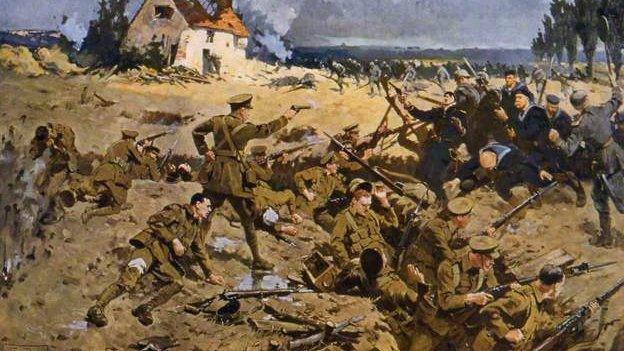War memorial left in abandoned Troedrhiwfuwch village
- Published

A few miles north of Bargoed is a war memorial without a village.
You could be forgiven for driving past on the main road through the Rhymney Valley as all that is left of Troedrhiwfuwch is the old post office and a farmhouse.
This once thriving mining village is now a ghost town, with only the ghosts of its heroes watching over.
Troedrhiwfuwch was gradually abandoned in the late 20th Century, as a shifting hillside to its west threatened to engulf the village.
With all but two houses demolished by the 1980s, all that remains is a war memorial honouring the 16 men of the village who died in World War One, and the single casualty of World War Two.
A closer look reveals that three of the fallen from the Great War were killed on the same day - 8 May 1915 - and served together in the same battalion.
The date came to be known as Monmouthshire's Black Day.
Drawing heavily from the historical county of Gwent and the Rhymney Valley, on that day The Monmouthshire Regiment bore the brunt of a fierce German offensive at the 2nd Battle of Ypres.
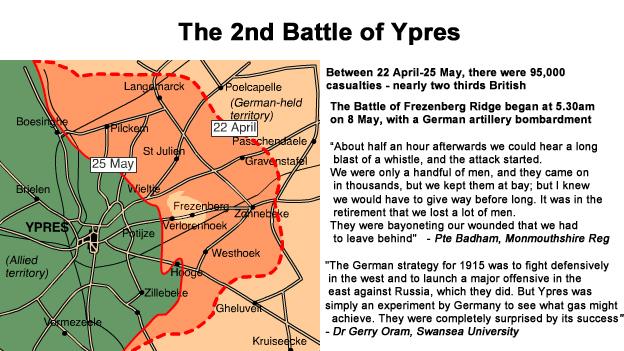
Historian Dr Stuart Broomfield explains that 8 May marked a new low in the savagery of the fighting.
"The 2nd Battle of Ypres is infamous for being the first occasion [on the western front] on which the Germans used poison gas to press home their advance," he said.
"The 1st and 3rd battalions of the Monmouthshires were defending Frezenberg Ridge, on the tip of the Ypres Salient.
"They were in a hopeless predicament, with only shallow trenches, little barbed wire protection and scant artillery cover. They fought heroically from the early hours until late in the day, but eventually they were forced to retreat to support trenches."
But Dr Broomfield added that even though they were forced to give ground, the Monmouthshires' line was never broken, and the German advance was eventually halted.
Their stubborn refusal to give in is commemorated in "Surrender Be Damned", an oil painting by Fred Roe which hangs in Newport Civic Centre.
It depicts the moment when, after their right flank was infiltrated by German attackers, the 1st battalion were ordered to surrender.
Their commanding officer Captain Harold Edwards answered with "surrender be damned", as "The Mons" fought a retreat to a more secure position. It came at a terrible price.
By the end of the day, of the 83 officers and 1,020 men of the 3rd Mons, only four officers and 131 men were left.
The 1st Battalion fared equally as badly, losing 439 of 588 men.
The losses were so great the three battalions had to be merged into one afterwards.

FOUR NOT THREE VILLAGERS DIED ON THE SAME DAY
Troedrhiwfuwch's three fallen alone represented half a percent of their tiny 600 population, although Dr Broomfield has discovered that the true story was even worse.
"The three names listed on the memorial are Riflemen Arthur Panter, George Ward and James Henry Hillman, but as well as these, Rifleman Hillman's brother, Thomas, was also killed, but as he'd given his address when enlisting as living with his parents in Bristol, he's commemorated on the Bristol memorial instead.
"Their bodies were never identified and all four are also commemorated on the Menin Gate in Ypres, Belgium."

Thomas Hillman (top right) and brother James (bottom) as children with their brother and sister; their names remembered on poppies left at Ypres
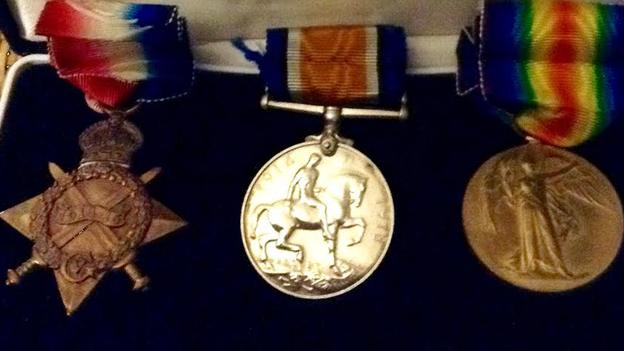
James Hillman's medals awarded after his death
All were miners and the sons of miners.
George Pritchard Ward was 21 and the second of three sons. Arthur Panter was 23 and lived in the High Street.
The Hillman brothers - 25-year-old Thomas and brother James, 22, - also served together in the same battalion and died in battle on that same day. By this time their parents John and Annie had moved to Bristol.
Thomas was married to Margaret, who remarried after his death.
The brothers are still remembered by their descendants, who visited the Menin Gate memorial at Ypres last year to leave poppies.
Great-niece Kay said tragedy struck the family again in World War Two.
"Their sister Mary - my gran - also lost her mother and brother [William] in December 1940 when a bomb dropped in Bristol; their names are on a memorial in Castle Park."

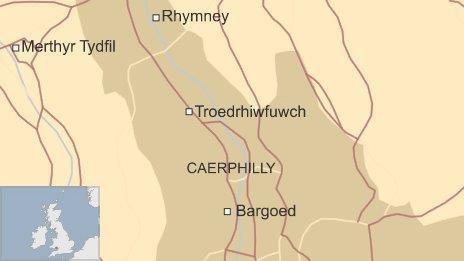
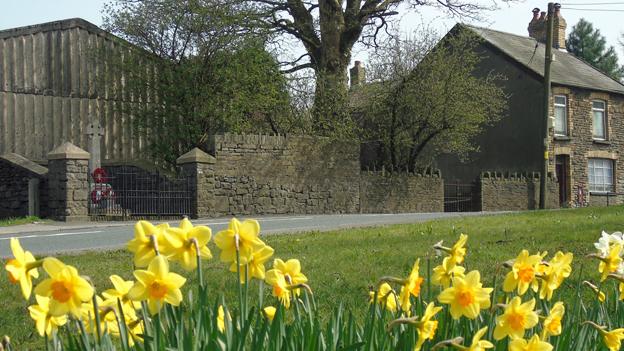
The war memorial and the former post office are all that remains of the village High Street
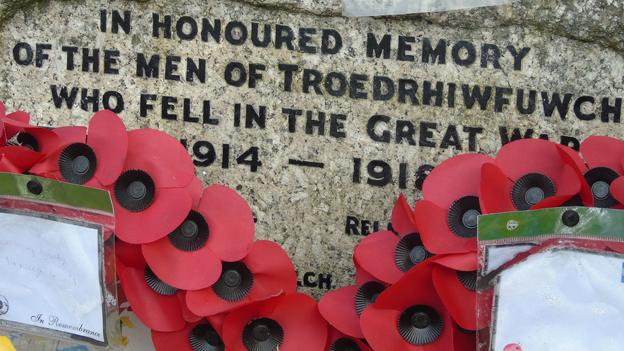
Tributes are still left to the fallen at the memorial by the roadside - an incredible 140 of the 600 inhabitants served in World War One
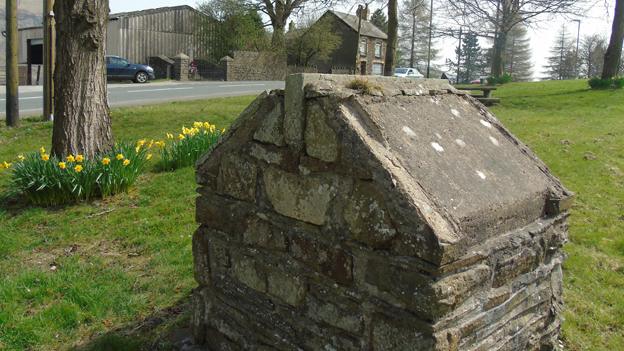
A sculpture in the shape of a house marks where the thriving village once stood

This is Chapel Road, where George Ward lived with his parents
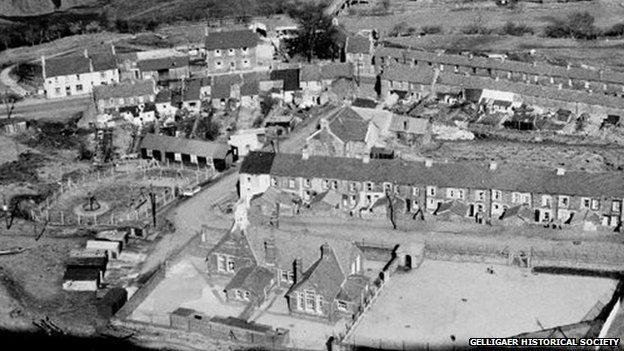
Troedrhiwfuwch as it once looked
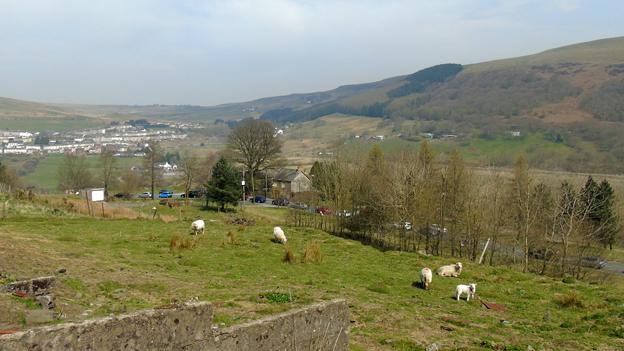
Farmland overlooking Troedrhiwfuwch High Street near where the village school once stood

Annie Owen, chair of the Gelligaer Historical Society, has researched Troedrhiwfuwch, and says its subsequent fate makes the memorial all the more eerie.
"The geological problems there have been known about for a long time, with the first reports of the danger of land slips coming around 1906, so it's possible that the men who left Troedrhiwfuwch for the Western Front might already have known their homes were at risk.
"Whether that was a factor or not, an incredible 140 of the 600 inhabitants volunteered to serve, and as we know, 16 never came back.
"Ironically, the hillside which threatened the village has now been shored up, but the isolation of the memorial there is strikingly poignant as soon as you see it."

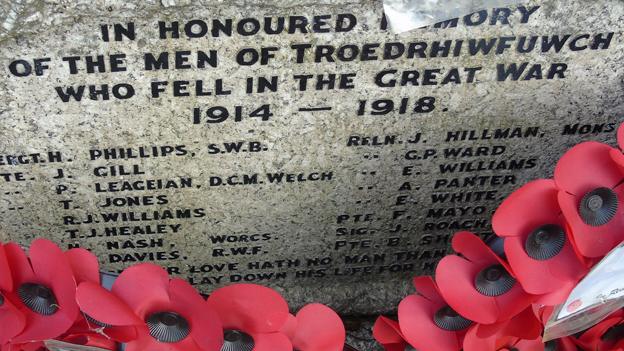
A poem was published in the Western Mail in January 1915, four months before Monmouthshire's Black Day:
"Hurrah for the village whose name we can now tell
"A name to the Saxon not easy to spell
"Where ere there are slackers
"They are not amongst youths
"Who hail from the hamlet of Troedrhiwfuwch
"From 94 houses, one hundred and ten
"Is the number recruited of gallant young men."
- Published7 May 2015
